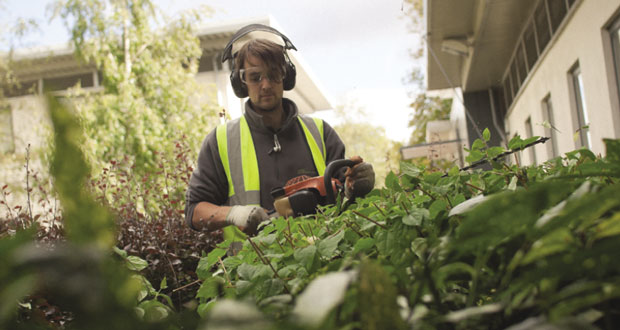Whether it’s proactive maintenance of drains or grounds or readying your plan for snow and ice clearance, Brendan Aherne, Winter Services Director at OUTCO explains that now is the time to prepare for winter
Estates management is ultimately all about risk. Wear and tear on assets risks reducing their value. Leaving small problems unresolved risks greater costs down the line that may have a material impact on an organisation’s bottom line. Beyond the risks to the fabric of buildings or car parks, there is of course the human dimension: Hazardous conditions such as slippery surfaces or broken paving risk injury to site users, which in these litigious times carries the heavy risk of legal action, liability claims and even imprisonment for breaches of the Health & Safety at Work Act, which fall under criminal rather than civil law.
 Perhaps more than any other time in the year, winter is when these multiple overlapping risk factors coincide: On the one hand, extreme weather conditions such as storms, flooding, snowy or icy conditions present direct hazards, while on the other, limited daylight hours or access to sites caused by weather conditions conspire to make it more challenging to resolve issues. As a result, it’s vital to take a comprehensive and early approach to assess and plan for the winter months that encompasses areas such as grounds maintenance, drainage, and – naturally – snow and ice clearance.
Perhaps more than any other time in the year, winter is when these multiple overlapping risk factors coincide: On the one hand, extreme weather conditions such as storms, flooding, snowy or icy conditions present direct hazards, while on the other, limited daylight hours or access to sites caused by weather conditions conspire to make it more challenging to resolve issues. As a result, it’s vital to take a comprehensive and early approach to assess and plan for the winter months that encompasses areas such as grounds maintenance, drainage, and – naturally – snow and ice clearance.
GROUNDS MAINTENANCE PRIORITIES
Many organisations significantly reduce grounds maintenance with the onset of winter, for example by reducing the number of site visits after the main growing season ends. However, even when lawns aren’t in need of regular cutting this can be a false economy: Some of the most beneficial care is carried out in the coldest months to help lawns grow healthily and free of moss during the summer, and this is true for grounds maintenance as a whole. In any given season, the work you’ve done in the preceding period is often the key to success.
A key activity in the approach to winter is leaf clearing, which is generally required between September and December. Beyond the aesthetic considerations, wet leaves on pavements can present a slipping hazard that can present just as much legal risk to site owners as the snows and ice of winter. Leaf collection is also an important way to prevent more costly works further down the line. For example, leaves and debris that build up can destroy lawns which will require grounds teams to undertake more costly work later to bring these areas back up to standard. Similarly, decaying leaves on lawns or hard standings can also form a substrate that allows weeds to germinate. This then requires more weed control as well as unnecessary and costly chemical treatments during the growing season.
Autumn provides a great time to schedule landscaping works such as planting and arboriculture activity. August through to November is also an important period to focus on landscaping activities like hedge trimming. This is not just to keep things tidy but also to ensure safe access around paths and to preserve sight lines for vehicle traffic in car parks and for security cameras. Similarly, another important area to consider is the safety of trees onsite and it’s important to ensure that any wooded areas near buildings or paths have been recently inspected for dead wood that may need removing to ensure safety during winter storms. As with any area of health and safety, acting proactively regarding tree safety and effectively documenting this action is the key to mitigating legal hazards should the worse happen.





